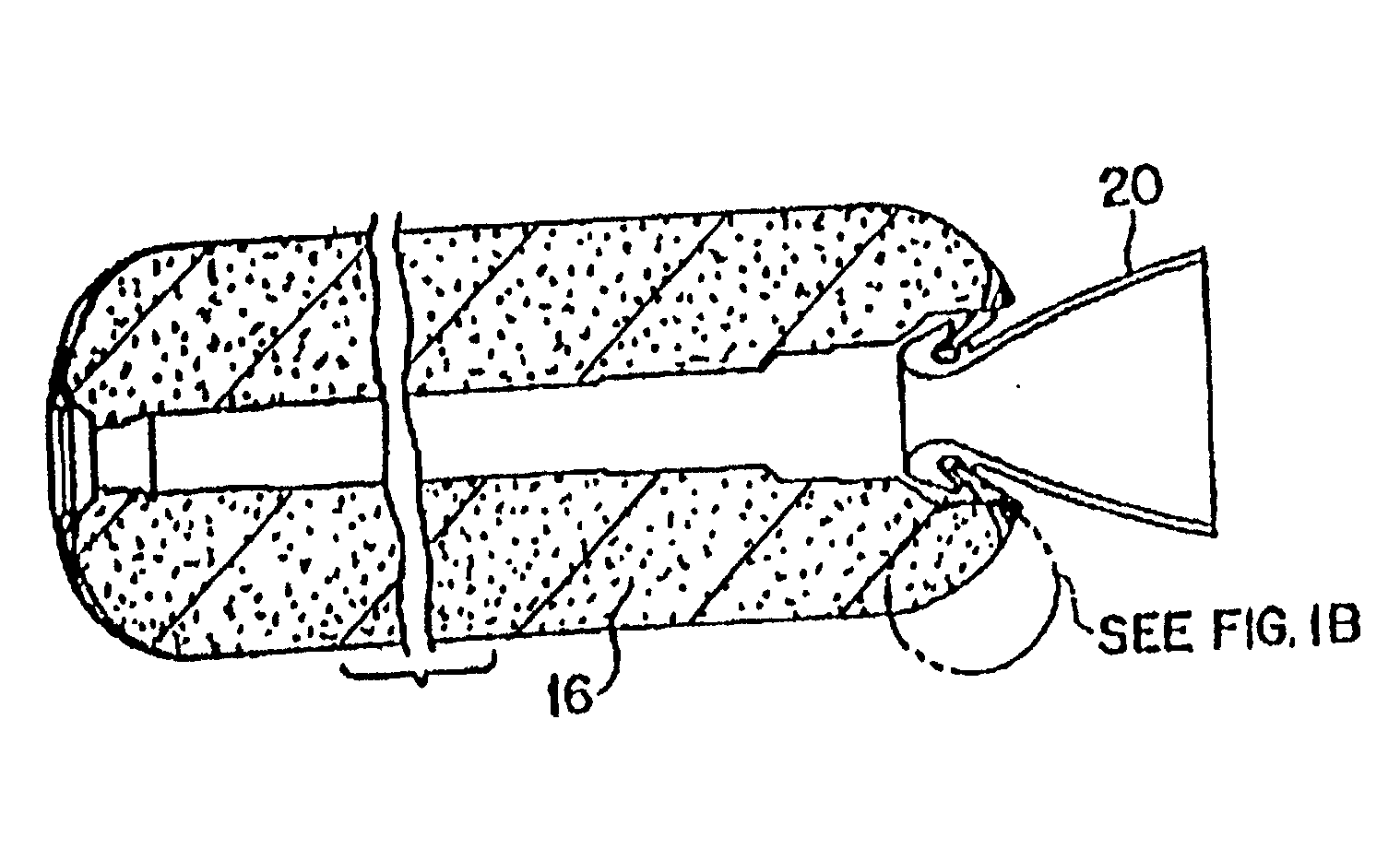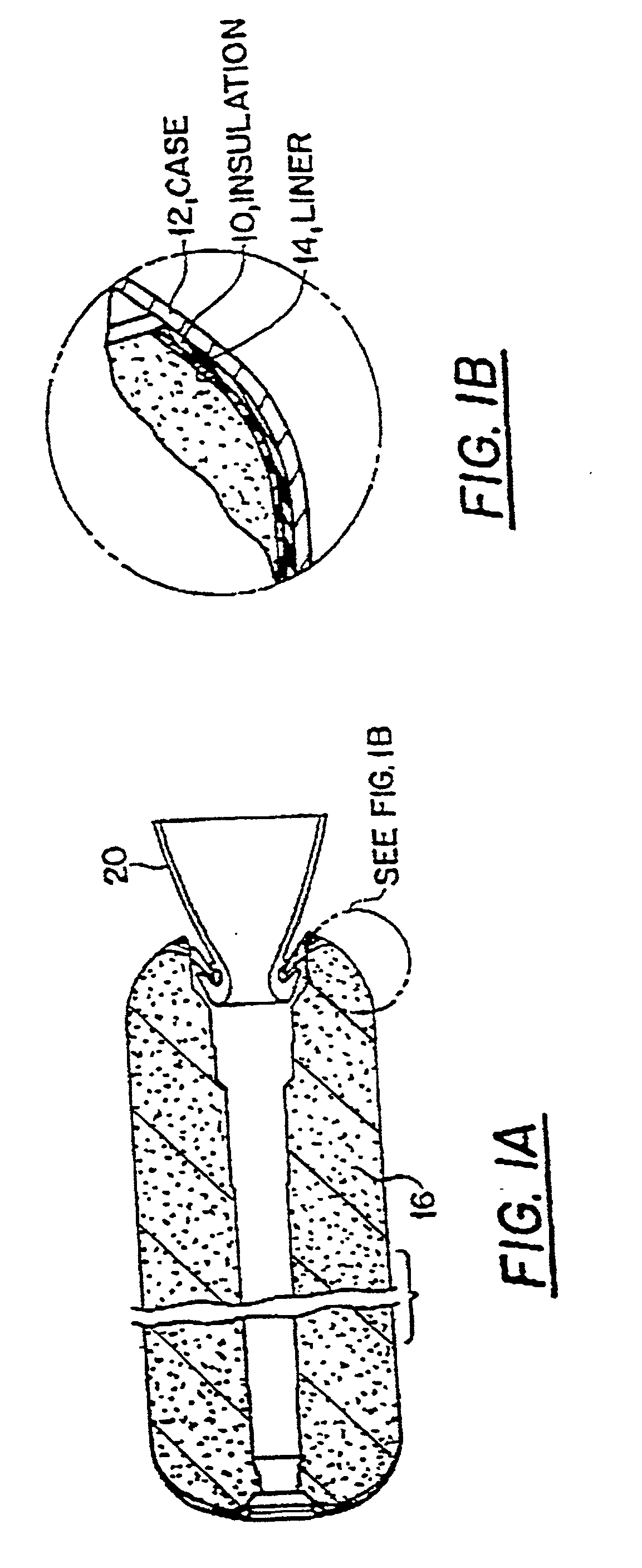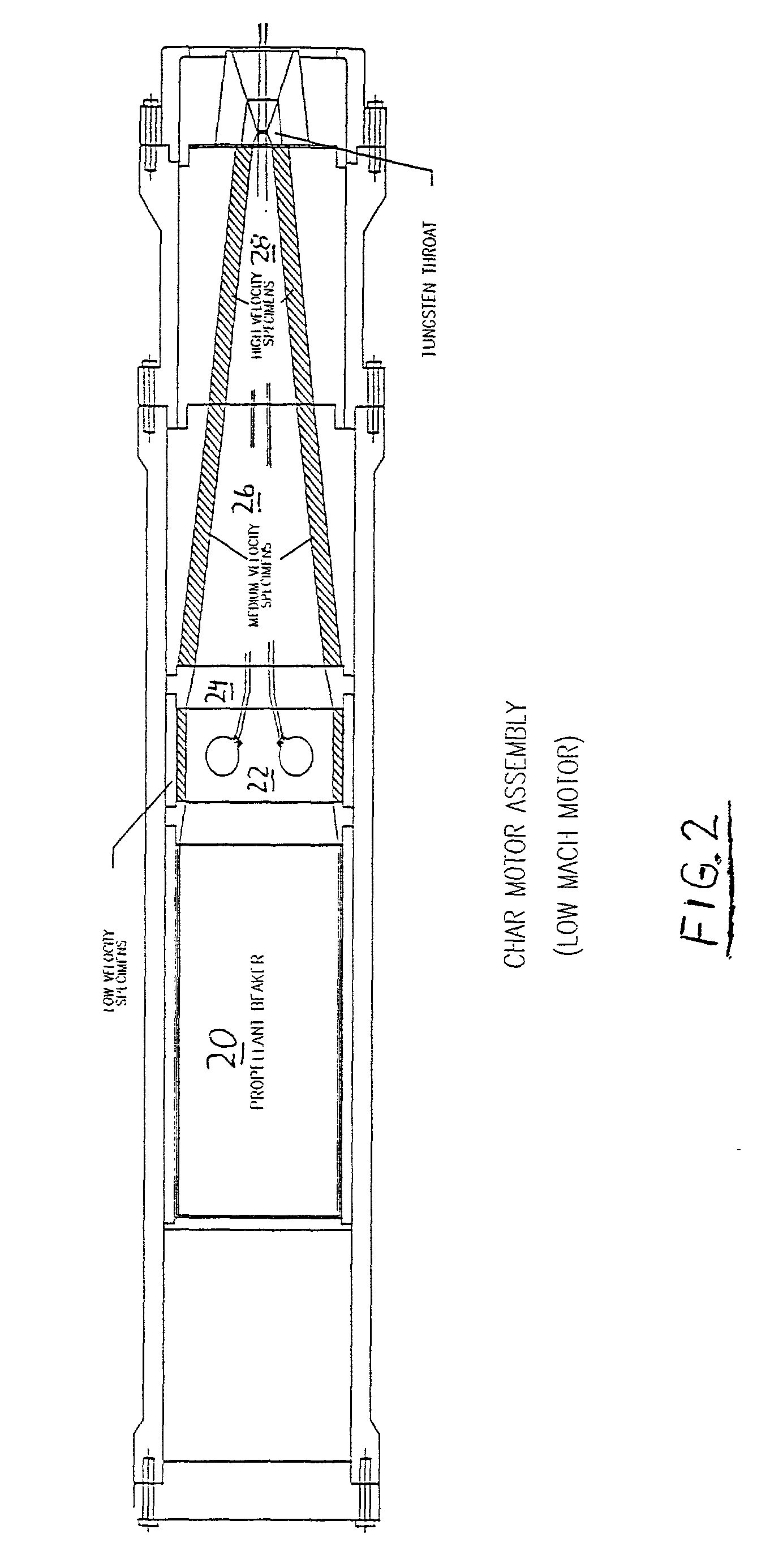Fiber-reinforced rocket motor insulation
a fiber-reinforced, rocket motor technology, applied in marine propulsion, vessel construction, explosions, etc., can solve the problems of high degree of turbulence in the rocket motor casing, erode the insulation the failure of the rocket motor, etc., to achieve good insulating properties and low cost
- Summary
- Abstract
- Description
- Claims
- Application Information
AI Technical Summary
Benefits of technology
Problems solved by technology
Method used
Image
Examples
example 1
[0058] Example 1 and Comparative Example A were each prepared by a two-pass mix cycle. In the first pass, all of the ingredients except for the cure activator, cure accelerator, and curative were added to a mixer and mixed for several minutes. heated to 116.degree. C. (240.degree. F.). Comparative Examples A was heated to 135.degree. C. (275.degree. F.). A mill was used to sheet the mixtures, and the sheets were allowed to cool. The cooled mixtures were then returned to the mixer, and the cure packages were added. Mixing continued until the temperature reached about 80.degree. C. (175.degree. F.) for Example 1 and 82.degree. C. (180.degree. F.) for Comparative Example A. The mixture was then sheeted and allowed to cool.
2TABLE I Comparative Ingredient Function Example 1 Example A NORDEL .RTM. IP NDR- EPDM 50.00 50.00 4640 NORDEL .RTM. IP NDR- EPDM 40.00 40.00 4520 Hypalon 20 Chlorosulfon- 10.00 10.00 ated polyethylene Akrochem P-133 Tackifier 5.00 5.00 Agerite Stalite S Antioxidant 2...
PUM
| Property | Measurement | Unit |
|---|---|---|
| diameter | aaaaa | aaaaa |
| diameter | aaaaa | aaaaa |
| length | aaaaa | aaaaa |
Abstract
Description
Claims
Application Information
 Login to View More
Login to View More - R&D
- Intellectual Property
- Life Sciences
- Materials
- Tech Scout
- Unparalleled Data Quality
- Higher Quality Content
- 60% Fewer Hallucinations
Browse by: Latest US Patents, China's latest patents, Technical Efficacy Thesaurus, Application Domain, Technology Topic, Popular Technical Reports.
© 2025 PatSnap. All rights reserved.Legal|Privacy policy|Modern Slavery Act Transparency Statement|Sitemap|About US| Contact US: help@patsnap.com



